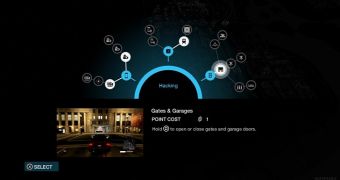Watch Dogs has finally been released worldwide and Ubisoft's Montreal team has managed to deliver a brave open world experience that's focused on hacking besides shooting and driving around, like in other rival experiences such as Grand Theft Auto, for example.
The hacking focus piqued the interest of many gamers when Watch Dogs was first revealed to the world at E3 2012 and, since then, Ubisoft has shared a lot of great details about the ambitious mechanic and how it adds a fresh strategic element to the whole open world experience.
After going through the game, I can safely say that the hacking system is certainly top-notch and manages to transform the open world action adventure game into something more than just a GTA clone.
Without it, I can even say that it would've ended up as a really disappointing experience, as the driving physics pose a few problems and shooting feels off, especially when combined with Aiden's low health and the great aim of your opponents.
Hacking in Watch Dogs happens thanks to your smartphone, which breaks into the fictional ctOS infrastructure that rules over the virtual Chicago. The operating system is connected to everything, from cameras to traffic blockers, Steam pipes, and much, much more.
With the flick of the wrist, Aiden can control the cameras, trigger different explosions, and cause havoc throughout the city.
However, in order to keep players from going overboard, Ubisoft has implemented a limit in the form of your smartphone's battery. Each trigger of traffic lights or other such things requires power and it's a great idea to invest skill points in unlocking more battery slots as early as possible.
Even assaulting enemy compounds is fundamentally changed via the hacking system, as you first go on reconnaissance to spot as many enemies as possible, so that you're not going to end up being spotted when sneaking around.
After figuring out the layout of the guards, you can start triggering distractions, such as sounds from phones, or even explosions, from steam pipes and other such things. This will put enemies on alert but they won't know what caused the freak accident.
Unfortunately, while this main level hacking system works quite well and introduces an added layer of depth, the actual hacking mini-game that protagonist Aiden Pearce needs to complete when breaking into certain devices or ctOS mainframes is rather annoying.
It's a standard "pipe dream" scenario, as power is being emitted by a source and you need to route it towards the end node, while unlocking new junction pieces along the way. While that may sound easy enough, it gets really annoying when you have to wrestle with the awkward camera angle that requires you to tilt and pan in order to see the whole circuit. Zooming out doesn't work and zooming in is useless in the scenario.
Overall, the hacking system is quite good overall, even if the breaching mini-game will annoy you.

 14 DAY TRIAL //
14 DAY TRIAL //